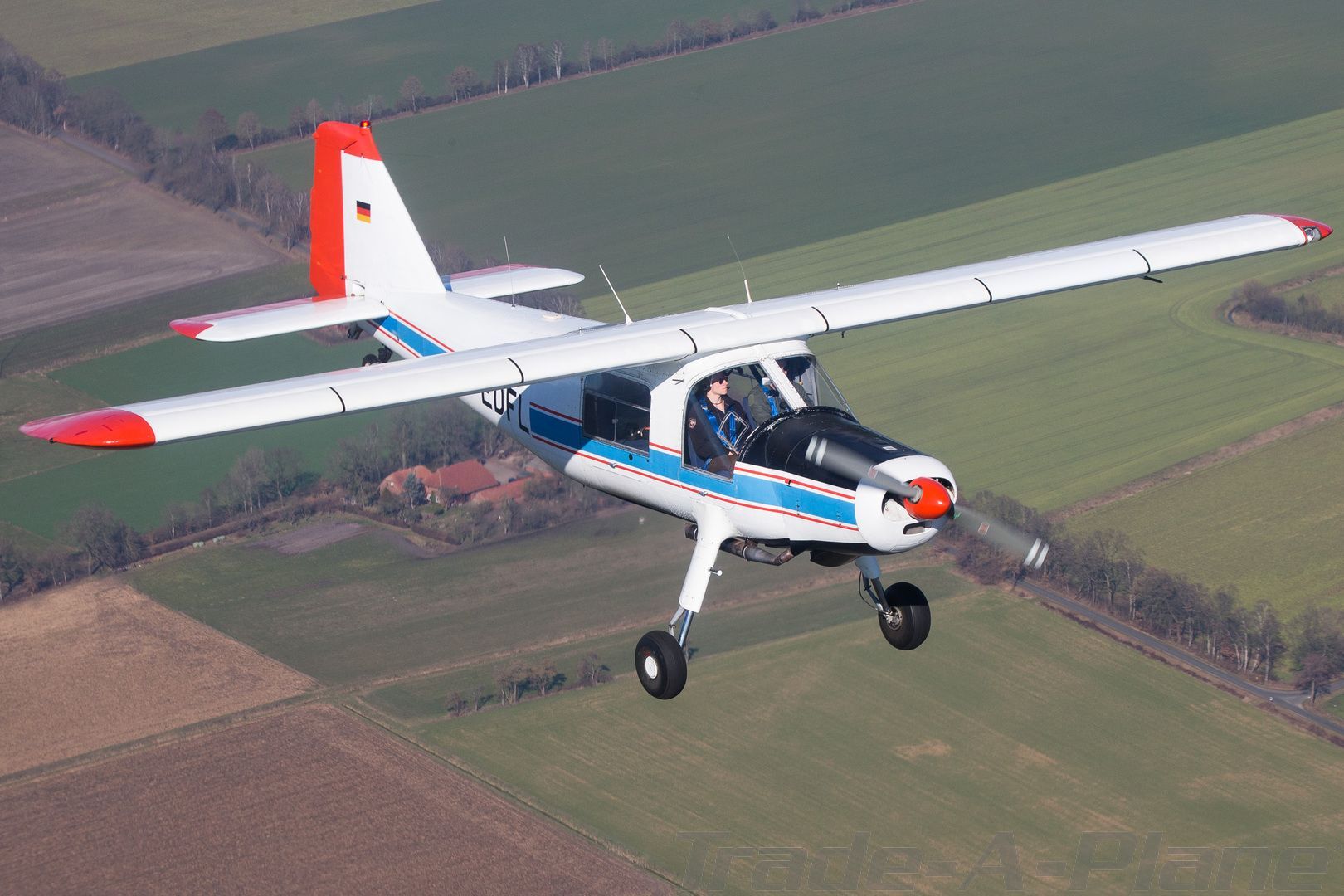Aircraft > Single-Engine Piston > Dornier > D-EDFL: Dornier DO-27 B-3
D-EDFL: Dornier DO-27 B-3
Last Updated
Nov. 10, 2023
Details
Registration #
D-EDFL
Status
Off Market
Year
1959
Make
Dornier
Model
DO-27 B-3
Serial Number
392
TTAF
3620
Engine 1 Time
980
Location
TBA DEU
Listings
Site
Price
Status
Updated
Description
The Do 27 which Boschung Global is offering is a little more special that most, given that it was once flown by NASA Astronaut Neil Armstrong. Built in 1959, this aircraft is one of sixteen B-3 dual control machines produced. It began its use as a research platform in 1960, operating initially from Oberpfaffenhoffen with ESt 61 (Erprobungsstelle) and thereafter from Braunschweig with the German Test and Research Institute for Aviation and Spaceflight - in which colours it still wears today. In 1969 the Dornier was equipped with Fly-By-Wire systems for flight testing, the aircraft continuing to be involved in aerospace, experimental flights and occasionally glider towing for more than two decades thereafter. In 2018 the Dornier was passed into private ownership and made appearances at various air shows where it demonstrated the type's now legendary flying prowess.
Avionics
GARMIN GNC 255A VHF COM/NAV 8,33 kHz FLIGHTCOM 403 6-place intercom GARMIN GTX 330 Mode S Transponder ACK A-30 ALT Encoder Bendix King KG102A Directional Gyro with slaving unit Bendix King KI252A HSI Bendix King RMI KI-229 (ADF receiver currently not installed, wiring exists for Becker AD2070)
Airframe
TTSN 3'620 hrs 4'850 Total Landings
Engines / Mods
Engine(s): 1x Lycoming GO-480-B1A6 TSO 980 hrs TBO 1400 hrs Overhauled in 1988, one cylinder replaced 2021. Propeller(s): 1x Hartzell HC-82-V20-1B / V101 33D-3 TSO 150 hrs TBO 1500 hrs; 5 yrs LTA insp. in 2022
Remarks
ADDITIONAL EQUIPMENT Aircraft is presently equipped with 4 seats. A second seat bench is included in the offer to operate the aircraft in a 6-seat configuration (only seat belts subject to replacement). Being the -B3 version of the Dornier 27, the aircraft features dual controls with one set of brakes on the pilot side. On the bottom side to the rear of the pilots, there is a large camera hole facing directly downwards for photo missions. This was used for reconnaissance missions on the military versions of the Dornier 27. Furthermore, it is possible to open the rear doors in flight, making the aircraft perfect for aerial photography as well as parachute dropping. The Dornier 27s speed range from stall speed (24 kts) to never exceed speed (178 kts) is remarkable and makes it worth to see on airshows. Its slats and flaperons support the STOL-abilities of the aircraft. Together with its useful load of 600kg, this is a very versatile airplane. HISTORY & BACKGROUND Built in 1959, this Dornier 27 (s/n 392) was used as a research platform starting in 1960. Registered as YA+913 and later 56+84, the aircraft was assigned to ESt 61 (Erprobungsstelle) in Oberpfaffenhoffen and later served the German Test- and Research Institute for Aviation and Spaceflight (DFVLR) in Braunschweig. She is still wearing the latter's paint scheme today.
